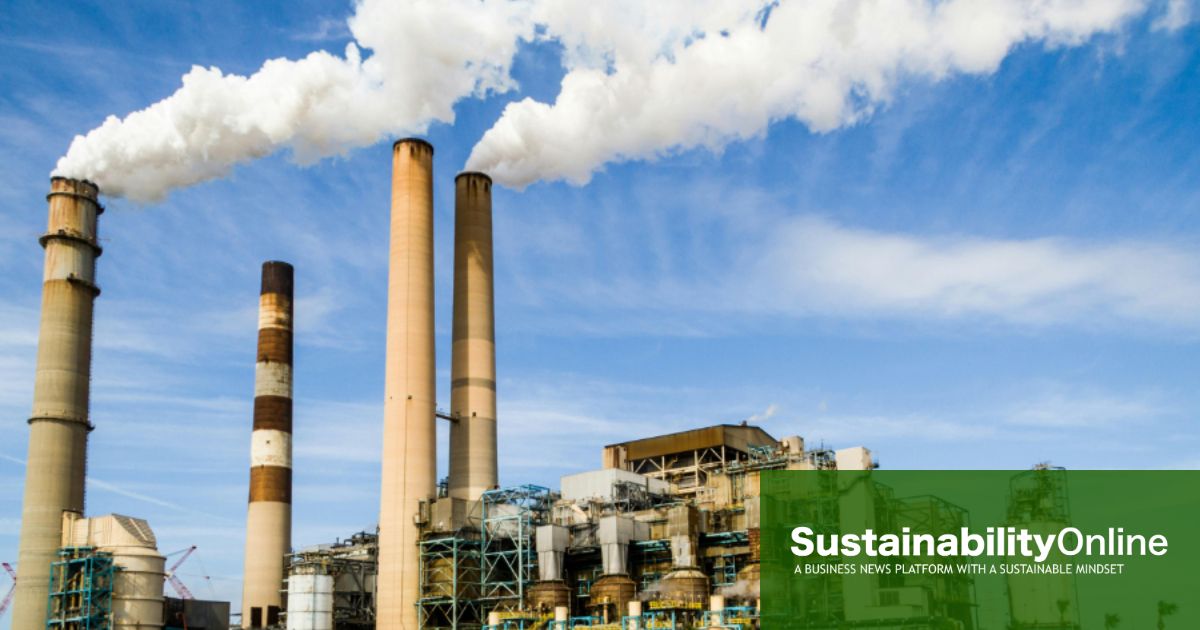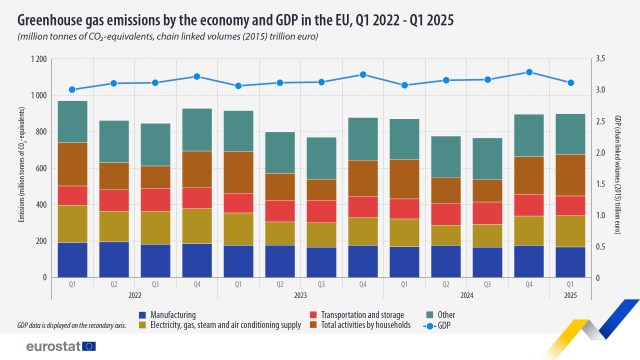The European Union recorded greenhouse gas emissions of approximately 900 million tonnes of CO₂-equivalents in the first quarter of this year, a 3.4% increase on the corresponding period a year ago, new data from Eurostat has revealed.
The GDP of the EU grew by 1.2% in the same period, indicating that emissions rose at a faster rate than economic output, the data showed.
The economic sectors contributing the most to the total greenhouse gas emissions were households (25.5%), electricity and gas supply (19.3%) and manufacturing (18.6%). The ‘other’ segment, which comprises sectors such as agriculture, forestry and fishing; mining and quarrying; construction; water supply, sewerage, and waste management and services (except transportation and storage), accounted for around a quarter of the emissions in the quarter.
Most responsible
The sectors most responsible for the increase in emissions were electricity, gas, steam and air conditioning supply, which saw emissions rise by 13.6%, while households saw emissions grow by 5.6%.
Three sectors reported a reduction in emissions, however, with manufacturing emissions declining by 0.2%, transportation and storage by 2.9%, and agriculture, forestry, and fishing by 1.4%.
Increased emissions
Increases in greenhouse gas emissions were reported across 20 EU member states, with seven seeing reductions.
Notably, six countries – Bulgaria, Czechia, Cyprus, Poland, Hungary, and Greece – recorded increases above 5%, while the largest decreases in emissions were reported in Malta (-6.2%), Finland (-4.4%) and Denmark (-4.3%).
Among the seven countries that reported a drop in emissions last year, Denmark, Finland, Malta, and Sweden reduced emissions while maintaining GDP growth, while Estonia, Latvia, and Luxembourg recorded both lower emissions and declines in GDP.
Emissions tracked, according to the data, include carbon dioxide (CO2), nitrous oxide (N2O), methane (CH4) and fluorinated gases (hydrofluorocarbons (HFC), perfluorocarbons (PFC), sulphur hexafluoride (SF6) and natrium trifluoride (NF3), expressed in CO₂-equivalents.
EU-wide climate policy, as outlined in the European Climate Law, has targeted a net reduction of 55% in greenhouse gas emissions by 2030 and is aiming for climate neutrality by 2050. Read more here and here.
Like this:
Like Loading…
Related

